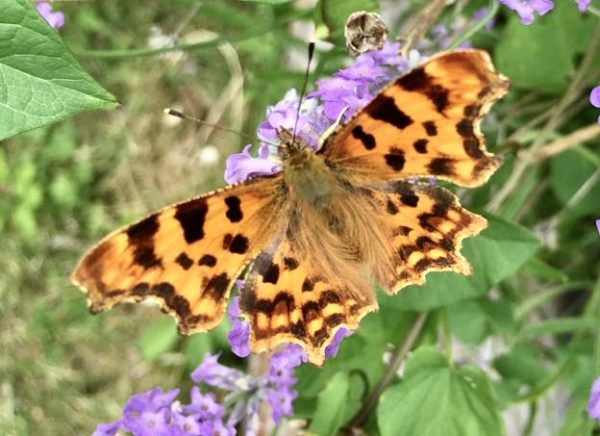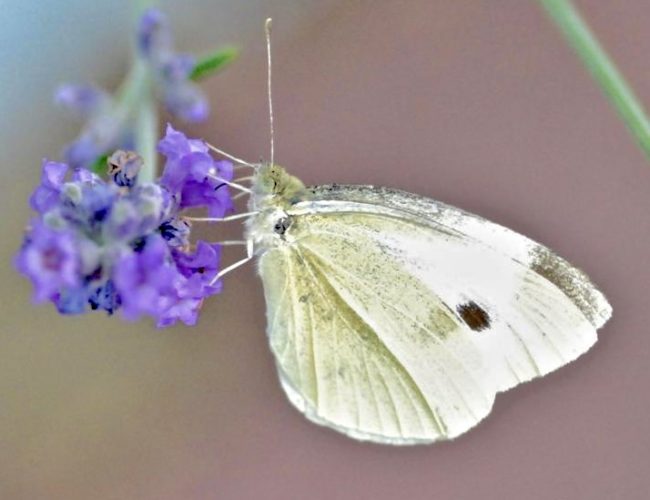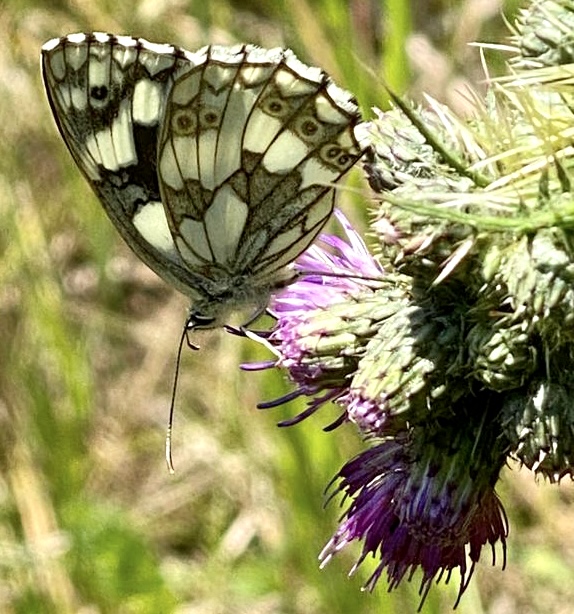Where do butterflies come from?

An obvious answer to this question would be - caterpillars. But when did butterflies first appear? There are now some 160,000 species of moths and butterflies -worldwide. Seemingly, they appeared some 100 million years ago - in North America. They evolved from nocturnal moths in the period when flowering plants were undergoing a major expansion (in the Cretaceous period). Butterflies may have become diurnal to avoid predation by bats, or it may have been to take advantage of nectar production and availability [using the proboscis]. The butterflies and their caterpillars were able exploit the diverse range of food resources that these ‘new’ plants offered. Butterflies moved out from North America to South America and then on to other parts of the world, though they probably did not arrive in Europe until some 17 million years ago.
The evolutionary expansion of the butterflies has been investigated by researchers at the University of Florida; they analysed the genetic makeup of many species (from 90 countries). They were able to build up a picture of the relationships between the various groups of butterflies and also determined their evolutionary point of origin. They also catalogued the plants eaten by the caterpillars and it was found that some two thirds of butterfly caterpillars feed on plants from the legume family (the Fabaceae - peas and beans). It is probable that the first butterfly caterpillars also fed on these plants.
 Research at the Georgetown University in Washington DC suggests that larger species of butterfly are ‘coping’ better with higher temperatures, associated with global warming. Bigger wings seem to offer a greater range of movement and the opportunity to find new and suitable habitats. Smaller butterflies are not faring so well. The study involved an analysis of the range of some 90 North American species between 1970 and 2010, during which period the monthly minimum temperature increased by 1.5oF.
Research at the Georgetown University in Washington DC suggests that larger species of butterfly are ‘coping’ better with higher temperatures, associated with global warming. Bigger wings seem to offer a greater range of movement and the opportunity to find new and suitable habitats. Smaller butterflies are not faring so well. The study involved an analysis of the range of some 90 North American species between 1970 and 2010, during which period the monthly minimum temperature increased by 1.5oF.
Others have analysed the butterfly collections at the Natural History Museum, using digital technology. The Natural History Museum’s British and Irish butterfly (and moth) collection is probably the oldest, largest, and most diverse of its kind in the world; some of the specimens date back over a hundred years
 The measurements of the various specimens were paired with the temperature that the species would have experienced in its caterpillar stage. It was found that for several species that the adult butterfly size increased as the temperature increased (during late larval stage). So, it may be that we will see a gradual increase in butterfly size as temperatures increase with global warming.
The measurements of the various specimens were paired with the temperature that the species would have experienced in its caterpillar stage. It was found that for several species that the adult butterfly size increased as the temperature increased (during late larval stage). So, it may be that we will see a gradual increase in butterfly size as temperatures increase with global warming.
Join the Big Butterfly Count ?
Between Friday 14th July and Sunday 6th August , the big butterfly count will take place. For full details visit :
https://bigbutterflycount.butterfly-conservation.org/about

Thanks to Angus for images.
Comments are closed for this post.
Discussion
As soon as I see the words ” Global Warming ” I realise that intelligence is missing and brainwashed is the appropriate word

Poor old you Roy!
donald Johnston
22 July, 2023